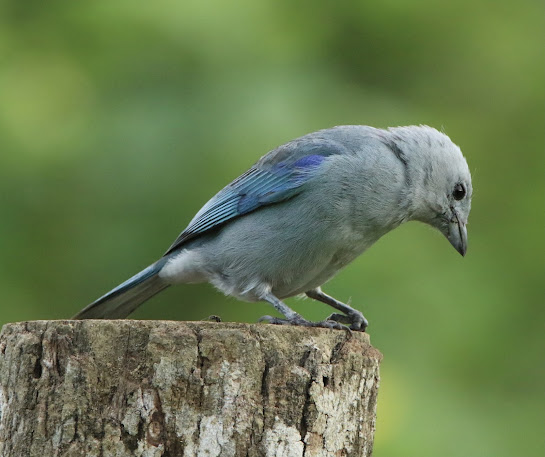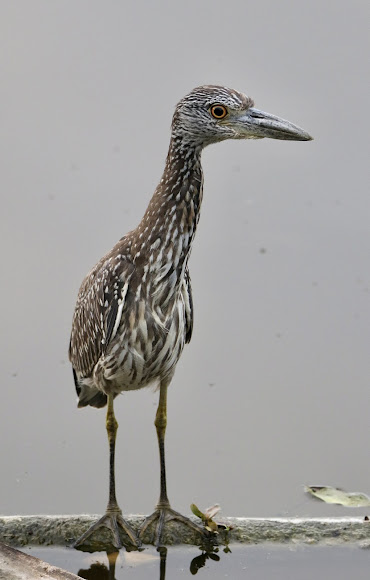THE LAGOON
In considering lodging arrangements, I began reading various blogs by travelers to Ayampe, and learned there was a lagoon on the north side of town. While most come here for the surfing or yoga, one person discovered and wrote about the lagoon and the Colibri Road heading east, into the jungle. That is when I realized this was the same place where the Ayampe Reserve was located, run by the Jocotoco Foundation, and where an acquaintance of mine from Oregon State University had done some of his post-graduate work. So between the coast, lagoon, and jungle I concluded this area had really good potential for birding, and so decided to come here for the first month. I left open the 2nd month to consider other options after I’d been here for a while.
My lodging, which is a series of cabins, is located on the south side of the lagoon. The south part of it is easily viewable from the road which borders the east and south side, and from the beach on the west side. That part of the lagoon is a marsh of about 10 acres, and some familiar birds which are always present are: Black-crowned and Yellow-crowned Night Herons, Great, Snowy and Cattle Egrets, Cocoi Herons, Black-necked Stilts, Masked Water Tyrants and Spotted Sandpipers. Other less common ones seen more inconsistently are: Blue-winged Teal, Comb Duck, White-cheeked Pintail, Black-bellied and Fulvous Whistling Ducks, Common Gallinule, Lesser Yellowllegs, Least Sandpiper, Semipalmated Sandpiper, White Ibis, Roseatte Spoonbills and Little Blue Heron.
 |
| The Lagoon when full, as seen from the road |
 |
| The Lagoon when full, as seen from the road |
 |
| Los dos hermonos |
 |
| The Lagoon when full, as seen from the beach |
 |
| Gabi, the owner of the cabin I stayed in. Her daughter is in the water somewhere behind her. |
If you walked north on the beach would come to the small estuary, or, at least where the estuary should be. There was no outlet even though the river was still flowing, albeit very stingily . This created another large area of open water about another 20 acres in size, and where families came to swim and splash around in the “lake.” I often saw Frigatebirds and Pelicans here gulping down the fresh water. The whole area was surrounded by mangroves which attracted mostly land birds.
A week after I’d been here, I noticed the water level in the lagoon had dropped significantly. I was really puzzled, but remembered the owner Marco telling me something about rains causing the outlet to erode, and then the high tides plugging up the outlet again, then the lagoon would disappear and then appear again. So I walked up the beach and, sure enough. It looked like the rains from a couple nights ago has done just that. There was a river cut right through the berm, and not much of a lagoon to be seen when looking east - inland. I have to admit this was a let down for a birder as the birds using it would would probably thin out due to less appropriate habitat.
 |
| Remnants of the Lagoon and the waders are limited to where they can go. |
 |
| The shot was taken from the same place as the first photo! |
 |
| This shot is from the same basic area where Gabi was standing a few shots previously. No more lagoon! |
A few short days later when I came out of my cabin, I noticed the lagoon was filling up. So I walked the beach to the outlet and, sure enough, the sea had washed up enough sand and rocks to recreate the berm. I thought this incredulous. So when it rains enough, the lagoon may disappear and when it is dry, the lagoon reappears. But since this time of when I'm writing, the lagoon has not been plugged up again, and may not for a time as there was another heavy rain which dissected the river bed deeper. A dry spell may be needed to eventually reverse those effects.
I’m told there is a trail going out into the mangroves, and where it begins, but have not walked it yet. Judging by where it is, I’m not real gung-ho to do so as it looks to be mosquito heaven. I may check it out eventually.
Here are some shots:
 |
| A Masked Water Tyrant. A pair had a nest in a bush out in the lagoon, and near the end of my stay in Ayampe, the babies fledged and the parents were feeding them. Lots of insect food! |
 |
| A Blue-gray Tanager. So common as to be annoyingly beautiful |
 |
| Saffron Finch. Another one so common and annoying after a while |
 |
| Immature Yellow-crowned Night Heron |





No comments:
Post a Comment